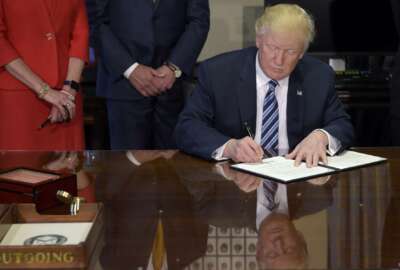
TSP agency has more detail on planned withdrawal changes
The Federal Retirement Thrift Investment Board, the agency that administers the TSP, is planning a series of sweeping changes to withdrawal rules and installment...
Participants in the Thrift Savings Plan should have several more options when making withdrawals from the plan starting in September 2019.
The Federal Retirement Thrift Investment Board (FRTIB), the agency that administers the TSP, said it’s planning to implement the broad changes Congress authorized in the TSP Modernization Act.
The president signed that act into law last November, and the legislation gives the FRTIB up to two years to implement more flexible withdrawal options for TSP participants.
The Federal Retirement Thrift Investment Board has been working on the withdrawal changes since last September — in anticipation that the TSP Modernization Act would, in fact, become law. Since then, the agency has fleshed out the changes in more detail.
Under the new law, all TSP participants will be able to take one withdrawal every 30 days, Tanner Nohe, project manager supervisor for FRTIB, told board members and the Employee Thrift Advisory Council at joint meeting Wednesday morning.
Participants who have left federal service will have no other limitations beyond the 30-day requirement to make partial withdrawals from the TSP, he said.
Participants who are still in federal service at age 59-and-a-half or older will be able to take up to four partial withdrawals from the TSP during a given calendar year. The 30-day limit still applies, however, so participants can’t take four partial withdrawals during the span of two months, for example.
Currently, in-service TSP participants can make only one partial withdrawal at age 59-and-a-half or older. Other participants who have left government can only make one partial post-separation withdrawal — either a lump-sum payment, a series of monthly payments or annuity payment — under current law by age 70-and-a-half.
In addition, the FRTIB is planning changes to the current rules that govern installment payments.
The agency will let TSP participants who have left federal service take monthly, quarterly or annual installment payments for post-separation withdrawals. Applicable participants can make changes to these payments, which they can stop and restart at any time, at any point during the year. Currently, participants can only make changes to their installment payments during open season, which typically runs from early October to mid-December.
Participants can also request partial withdrawals while receiving installment payments, Nohe said.
Currently, participants who have left federal service must make a full withdrawal by age 70-and-a-half, where they’ll either set up monthly installments, an annuity or a lump sum. If they don’t decide how and when they’ll fully withdraw from the TSP, the FRTIB “abandons” the account.
“All of that is going away,” Nohe said. “August of this year is the last time we’re going to abandon accounts. Starting next year, we’re not going to abandon accounts anymore.”
Moving forward, the FRTIB plans to eliminate the deadline to make a full withdrawal election. Instead, the agency will pay the remaining difference of a participant’s TSP account through required minimum distributions (RMDs) to those who have reached age 70-and-a-half and haven’t determined how they’d like to withdraw the remaining funds in their accounts.
In the future, these participants will receive notices from the TSP reminding them that they haven’t made a full withdrawal election. These participants would receive several reminders throughout the year to take the required minimum distributions, which the Internal Revenue Code determines every year.
The FRTIB will also give TSP participants more flexibility to choose where their withdrawal payments come from. Currently, participants receive withdrawals proportionally from their traditional and Roth balances. In the future, participants can choose to receive a withdrawal from one or other balance — or the current method.
The Federal Retirement Thrift Investment Board has said it’s received many questions about the new withdrawal changes, and the agency’s own customer surveys have shown participants are anxious to start making withdrawals with more freedom.
According to a 2017 survey of TSP participants, respondents said they were least satisfied with their withdrawal options. About 62 percent said they were satisfied with those flexibilities.
Roughly 74 percent of active TSP participants who said they planned to transfer money from their accounts to another plan within 10 years of their retirement said they’re looking for more flexible withdrawal options elsewhere, while 85 percent of separated participants said they’ll transfer money out of the TSP to accounts with more choices.
Participants can find more information about the TSP’s planned changes to current withdrawal options, which the FRTIB updated Wednesday on this fact sheet.
Copyright © 2025 Federal News Network. All rights reserved. This website is not intended for users located within the European Economic Area.
Nicole Ogrysko is a reporter for Federal News Network focusing on the federal workforce and federal pay and benefits.
Follow @nogryskoWFED





